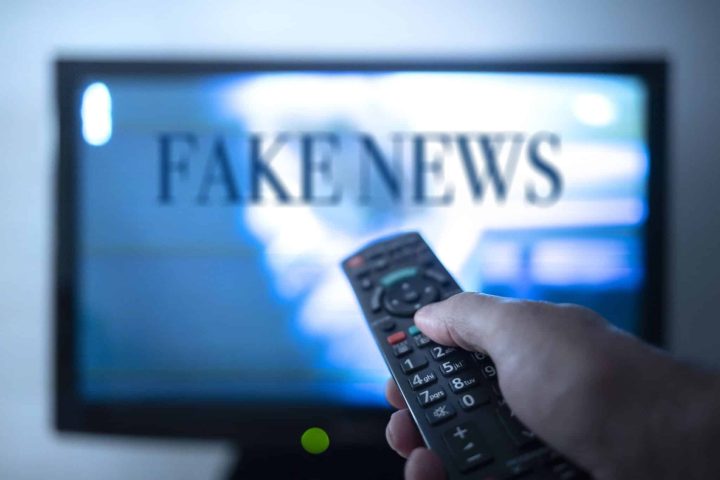
When Rasmussen Reports polled 1,000 likely U.S. voters earlier this month, it asked three questions:
- Do you trust the political news you are getting?
- How serious of a problem is “fake news” in the media?
- Do you agree or disagree with this statement: The media are “truly the enemy of the people”?
The results should be greatly comforting to those involved in the freedom fight: 580 of those polled agreed that the members of the mainstream media (i.e., The New York Times, The Washington Post, Time magazine, ABC News, CNN, etc.) are in fact enemies of the people.
Half the battle is knowing who the enemy is. Or, as Sun Tzu expressed it, “If ignorant both of your enemy and yourself, you are certain to be in peril.”
Noam Chomsky, a media researcher and a specialist in propaganda tactics used by media, provided insight into the enemy camp in his 1997 article “What Makes Mainstream Media Mainstream?”
He wrote:
The elite media set a framework within which others operate. If you are watching the Associated Press, who grind out a constant flow of news, in the mid-afternoon it breaks and there is something that comes along every day that says, “Notice to Editors: Tomorrow’s New York Times is going to have the following stories on the front page.”
The point of that is, if you’re an editor of a newspaper in Dayton, Ohio and you don’t have the resources to figure out what the news is, or you don’t want to think about it anyway, this tells you what the news is….
These are the stories that you put there because that’s what the New York Times tells us is what you’re supposed to care about tomorrow.
Just who are the “elite media”? Chomsky answers:
What are the elite media, the agenda-setting ones? The New York Times and CBS, for example.
Well, first of all, they are major, very profitable, corporations. Furthermore, most of them are either linked to, or outright owned by, much bigger corporations, like General Electric, Westinghouse, and so on.
Is every writer, every journalist, every news channel host in on the scam? Chomsky replies:
When you critique the media and you say, look, here is what Anthony Lewis [a former Pulitzer Prize-winning journalist for the New York Times] or somebody else is writing, they get very angry. They say, quite correctly, “Nobody ever tells me what to write. I write anything I like. All this business about pressures and constraints is nonsense because I’m never under any pressure.”
Which is completely true, but the point is that they wouldn’t be there unless they had already demonstrated that nobody has to tell them what to write because they are going say the right thing.
In his book, “Media Control: The Spectacular Achievements of Propaganda,” Chomsky describes how the public is deliberately and intentionally manipulated and controlled; how the mass media is the primary vehicle for delivering propaganda in the United States. He reveals how the mainstream media focuses on “controlling the public mind” and not on informing it.
He leaves open, however, the question of just who sets the agenda. One of the primary “agenda setters” in the United States has been the Council on Foreign Relations (CFR).
Established in 1921 following the failure of the League of Nations, the CFR’s purpose is to “awaken America to its worldwide responsibilities.” It has succeeded by infiltrating the mass media, think tanks, universities — every part of the culture that controls the conversation.
Richard Harwood, a former senior editor for the Washington Post, wrote back in 1993 that the CFR is “the nearest thing we have to a ruling establishment in the United States.” He explained:
The membership of these journalists in the Council, however they may think of themselves, is an acknowledgment of their active and important role in public affairs and of their ascension into the American ruling class.
They do not merely analyze and interpret foreign policy for the United States; they help make it. They are part of that establishment whether they like it or not, sharing most of its values and world views.
The tentacles of the CFR, and its sister groups the Bilderbergers and the Trilateral Commission, are exposed here. Members include Bill Moyers, Tom Brokaw, George Stephanopoulos, and Dianne Sawyer. Major newspapers infiltrated by the CFR include, in addition to the New York Times, the Washington Post, the Wall Street Journal, the Boston Globe, the Associated Press, Reuters, and the L.A. Times.
Mainstream magazines also hawking the official line include Time, Newsweek, U.S. News and World Report, Reader’s Digest, Atlantic Monthly, and Forbes. Publishing houses also caught in the CFR web include MacMillan, Random House, Simon & Shuster, and McGraw-Hill.
The CFR has also insinuated its members into the Brookings Institution, the RAND Corporation, the Foreign Policy Association, the Hudson Institute, the Carnegie Endowment for International Peace, and the United Nations Association.
Nor is it surprising that the CFR has enormous influence of the nation’s banking system, including JPMorgan Chase & Co., Bank of America, Citigroup, and Goldman Sachs. It also has influence in the insurance industry as well, including the Equitable, New York Life, Metropolitan, and Prudential.
If, as Sun Tzu said, half the battle is knowing your enemy, the other half is enlisting in the fight. See jbs.org for details on joining the John Birch Society in its epic 60-year educational effort to expose the enemy, rout him, and then begin the process of restoring the American republic to its former glory.
After all, if Rasmussen is right, then more than half of likely voters are open to the invitation now that they have been awakened.



